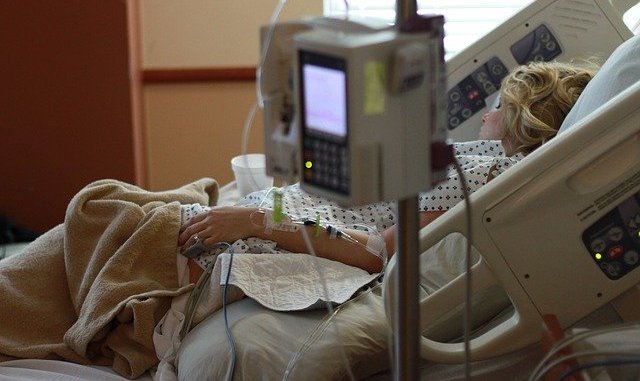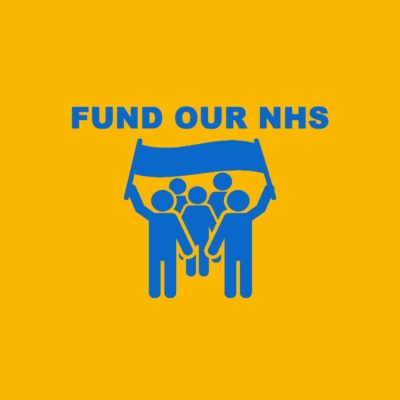
‘Groundhog day’ in the NHS means death and despair for thousands - the government must take responsibility, and we must take back our NHS.
The most recent performance figures show that in the NHS it is groundhog day once again - a situation in which a series of unwelcome events (missed targets) recur in exactly the same way. However, behind the statistics are a huge number of human stories of unnecessary suffering and death that shame those politicians in government who continue to support the failed Tory policies they have pursued tenaciously for the past last ten years.
A classic model of an organisation's defenses against failure is a series of barriers represented as slices of cheese. The holes in the slices are weaknesses in individual parts of the system and are continually varying in size and position across the slices. When a hole in each slice momentarily aligns, a hazard passes through all of the slices leading to a failure. Patients are now tumbling through the huge holes in primary care, ambulance services, A&E, and social care every minute. If patients cannot be discharged because of inadequate social care, bed occupancy rises. A&E is then filled with those needing admission but with nowhere to go (trolley patients) and the new specialty of ‘corridor nursing’ is created. Since A&E is packed with patients, waiting times for assessment and treatment increase and the 4 hours target becomes even more elusive. Meanwhile, ambulances are unable to handover sick patients and queue outside instead of being able to respond promptly to further call outs.
While NHS England SitRep reports give some of the picture, the first publication from the Royal College of Emergency Medicine’s (RCEM) 2019-20 Winter Flow Project indicated that existing data did not always reflect the true scale of the problem. RCEM figures showed that in the first week of December over 5,000 patients waited for longer than 12 hours in the Emergency Departments of 50 Trusts and Boards across the UK - equivalent to a third of the acute bed base in England.
From the beginning of October 2019 over 38,000 patients had waited longer than 12 hours for a bed at the sampled sites across the UK – yet data from NHS England reported that in England alone a total of only 13,025 patients experienced waits over 12 hours since 2011-12. The reason for the difference is that the RCEM correctly counts 12-hour waits from the moment a patient arrives in A&E – which is how it is measured in Wales, Scotland and Northern Ireland – but the NHS officially only records 12-hour waits from when doctors make a decision to admit the patient.
Data (as yet unpublished) by former RCEM vice-president Dr Chris Moulton, and former RCEM president Dr Cliff Mann, was widely reported in the press last December. Their study analysed the care received by more than four million people who attended A&E in England over the past three years. The findings indicated that 960 out of 79,228 patients who had to wait about six hours died as a direct result of the delay, meaning that one in every 83 people who have to wait that long to be admitted will die as a direct result of the delay in them starting specialist care for their condition. Similarly, 855 people died over the past three years because they waited about seven hours, as did 636 others who faced delays of at least 11 hours.
The researchers concluded that the deaths are entirely and solely caused by the length of wait and not by the patient’s condition. It is the first research worldwide to calibrate the risk of death for trolley patients by the number of hours waited. According to research seen by the Guardian, 5,449 people have lost their lives since 2016 as a direct result of waiting anywhere between six hours and 11 hours. Findings also showed that the chances of dying increased sharply the longer the wait, rising to 1 in 30 for patients whose admission is delayed for 11 hours.
John Kell, the head of policy at the Patients Association, said:
“These results are deeply shocking and very worrying. Patients are clearly suffering tragic consequences as well as loss of dignity and discomfort from spending far too long waiting on a trolley for care. This is as a direct result of sustained underfunding of the NHS and social care and ongoing shortage of hospital beds. Despite the unstinting efforts of NHS staff, patients can no longer be sure of receiving safe or dignified care if they need to be admitted to hospital. This is an entirely needless and completely unacceptable situation.”
In addition, Dr Nick Scriven, the former president of the Society for Acute Medicine commented:
“The exact numbers in this study should be a sobering reminder to all that these risks are occurring in some hospitals on a daily basis and, apart from the obvious loss of dignity of being kept in a corridor, there are proven safety risks as well. The risks will continue until overcrowded hospitals have the beds and staff they need.”
The RCEM report also showed just 69% of patients were seen within four hours across the 50 hospitals – the worst performance in the five-year history of the Winter Flow Project. This was in accord with NHSE SitRep data up to December 2019 (1), with the latest figures across a range of indicators similarly shocking. In January: only 82% of patients at all types of emergency department were seen within four hours, against the target of 95%. Only one out of 118 major A&E departments (type 1) that submitted performance data met the 4 hours target. The total number of A&E attendances exceeded 2.1 million, about the same as last year despite all the apparent efforts at redirecting patients away from A&E. 100,578 patients spent more than four hours on a trolley from a decision to admit to actual admission – this is the highest since records began. 2,846 patients had a trolley wait of over 12 hours, which is more than four times higher than in January 2019.
Dying due to having to wait an unacceptable amount of time for emergency medical attention is not confined to those on trolleys. There have also been plenty of examples where patients have died in the back of ambulances queuing to access the hospital, or on the floor waiting for an ambulance to arrive. In December for example, a 47-year-old woman from Cwmaman, south Wales later suffered a cardiac arrest in hospital after having to wait six hours on the pavement for an ambulance. The longer a patient waits, the higher the risk of complications and/or a fatality. According to a BBC investigation, delays for 999 ambulance calls affect one in 16 "emergency" cases in England.
Difficulty with being able to hand patients over in A&E is part of the problem with crews having to queue outside hospitals. While long waits for immediately life-threatening cases were unusual, long waits for other emergencies were much more common, including patients suffering from heart attack, serious injury, stroke, sepsis, major burns and fits. The data showed there were 385,000 waits of over an hour from January 2018 to September 2019 out of just over six million incidents responded to.
In November the British Medical Journal analysed current performance data and trends, predicting that the NHS was on track to endure its worst ever winter as pressure on services intensified. It said that a lack of recovery from the summer, staff shortages exacerbated by pension tax legislation forcing senior doctors to work fewer shifts, and a focus on Brexit planning rather than winter preparedness risked creating a “perfect storm”.
It also warned that particularly cold weather and significant flu outbreaks could exacerbate these further, urging the NHS to increase its bed stock before winter. However, even if new, promised hospitals eventually materialise, these will not solve the bed crisis. The NHS is now haunted by the spectre of a coronavirus pandemic with assurances from the Secretary of State for Health and Social Care that it is “well prepared” being met with some scepticism. Long waits in A&E clearly have the potential to increase the spread of the virus.
The NHS has lost 17,000 beds since 2010 as a result of cuts to services or mergers, leaving the health service with the lowest number of beds ever recorded. A&E doctor and member of Keep Our NHS Public Tom Gardiner says:
“Our A&E staff are working flat out in the face of an ever-increasing demand for services. Cuts affecting our hospitals, our GP surgeries and our social care system have led to a situation where vulnerable elderly patients are left waiting for hours on trollies. This is completely inappropriate and sadly I'm not surprised at this horrific new phenomenon of 'trolley deaths'. It's high time our politicians came and listened to the concerns of healthcare workers rather than going on the airwaves to promote yet more misleading pledges. Our patience is wearing thin”
It is nothing short of a disgrace that this situation is repeatedly occurring in the 6th richest world economy with no sign of positive change. However, it is sadly a predictable consequence of trying to run a health service with a gross shortage of both beds and the people to staff them. Only proper planning together with funding that takes account of inflation and increasing need will improve this shameful state of affairs. The government must recognise that their funding commitment will not be enough to reverse this situation, and crucially they must take sole responsibility for the abject failure encapsulated by these damning statistics.







Leave a Reply